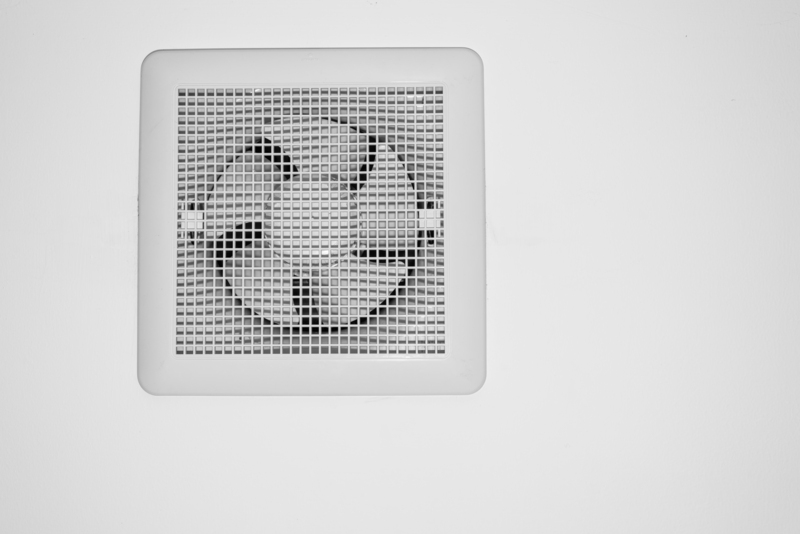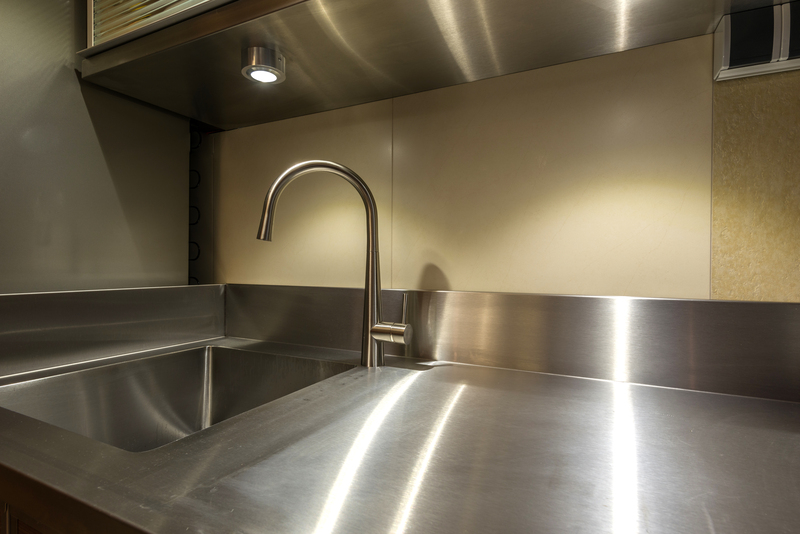Steam or No Steam for Your Leather Sofa: What Experts Say
Posted on 18/05/2025
Steam or No Steam for Your Leather Sofa: What Experts Say
Your luxurious leather sofa is a centerpiece of your living room, but when it comes to cleaning, opinions vary: Should you use steam on leather furniture or should you avoid it completely? In this in-depth article, we'll explore what professional cleaners and leather care experts say about using steam cleaners on leather sofas, best practices, alternative solutions, and how to keep your leather furniture looking its best for years.

Understanding Leather: Types & Characteristics
Before deciding if steam cleaning is appropriate, it's crucial to understand the composition of your leather sofa. Not all leather is created equal, and the care each type requires can vary dramatically.
Main Types of Leather Used in Sofas
- Aniline Leather: Highly natural and luxurious, colored only with dye, not pigment, so it's porous and sensitive to moisture.
- Semi-Aniline Leather: Slightly more protected than aniline, but still relatively natural and sensitive.
- Top-Grain Leather: Treated for greater durability, includes some surface coating making it moderately resistant to spills.
- Full-Grain Leather: The most natural form, with all imperfections intact, and the least processed.
- Bonded, Split, or Faux Leather: Heavily processed or artificial, often with a polyurethane finish; less sensitive to water, but not as durable or luxurious.
Knowing your sofa's material is the first step in proper care. The wrong cleaning method can cause irreparable damage--especially steam, when misapplied!
The Steam Cleaning Debate: Pros and Cons
Steam cleaning is recognized for its power to disinfect, lift stubborn stains, and eliminate odors in upholstery. Many steam cleaners on the market even advertise compatibility with various furniture types. But is this safe or wise for leather sofas?
Potential Benefits of Steam Cleaning Leather
- Deep Cleaning Power: Steam can penetrate surface pores and dissolve oils and grime.
- Sanitization: Hot steam kills bacteria and dust mites effectively without chemical cleaners.
- Quick Drying: Steam leaves less moisture than typical water-based cleaning, reducing risk of over-wetting.
Risks and Drawbacks: Why Experts Advise Caution
- Leather Sensitivity to Heat and Moisture: Leather is highly susceptible to both. Steam can cause the leather to dry out, crack, or peel, particularly on untreated or delicate hides.
- Loss of Natural Oils: Essential fats and oils give leather its suppleness. Intense heat from steam may strip these, leaving your leather stiff and prone to damage.
- Color Fading or Blotchiness: Excessive steam may disturb dyes, especially in aniline or lightly finished leathers, causing fading or uneven patches.
- Water Stains and Mildew: If steam penetrates too deeply and doesn't fully dry, it can lead to water staining or even hidden mold formation inside cushions.
Expert consensus is clear: Steam cleaning is generally not recommended for most leather sofas, unless specifically instructed by the furniture manufacturer.
What Leather Care Experts Recommend
Manufacturer Guidelines: Your First Line of Defense
Nearly all leather furniture manufacturers provide explicit care instructions, often strongly advising against steam cleaning. You'll typically find a label under the cushions or attached to the base, indicating cleaning codes such as:
- W: Water-based cleaners
- S: Solvent-based cleaners
- WS: Either water- or solvent-based
- X: Vacuum or brush only
Most leather sofas fall under "S" or "X"--meaning steam cleaning is not recommended.
Advice from Professional Leather Cleaners
- Eric Montgomery, Certified Leather Technician, says: "Steam is rarely appropriate for leather. It can cause visible damage that's almost impossible to repair, especially for high-end or natural leathers."
- Andrea Valdez, Furniture Restoration Specialist, adds: "The safest way to clean leather is gentle vacuuming, followed by wiping with a damp cloth and a mild, pH-neutral soap or a specialty leather cleaner. Steam should only be used, if ever, by fully-trained professionals and with the gentlest settings."
- Leather Repair Network (Industry Group): Recommends conditioning leather after any cleaning to restore lost moisture and oils, but cautions that steam can push moisture past the safe point very quickly.
How to Safely Clean a Leather Sofa
Regular Maintenance for Leather Upholstery
- Vacuum Regularly: Use a soft brush attachment to gently lift dust and crumbs from the surface and between cushions.
- Wipe with a Damp Cloth: Use a slightly damp, lint-free cloth to remove surface grime.
- Apply Leather Cleaner: For deeper cleaning, use a tested, pH-neutral leather cleaner. Always patch test on an inconspicuous area first!
Spot Cleaning Spills and Stains
- Blot, Don't Rub: Immediately blot spills with a dry cloth. Never rub--it can set the stain or spread moisture.
- Use Approved Cleaners: For tougher spots, apply a small amount of leather cleaner, following the manufacturer's instructions.
- Avoid Harsh Chemicals: No bleach, ammonia, vinegar, or strong solvents.
Conditioning Your Leather
- Use a Leather Conditioner: Every 6-12 months to restore lost oils, prevent drying, and maintain softness.
- Protect from Sunlight & Heat: Direct sun or proximity to vents can accelerate drying and fading.
When is Steam Cleaning Acceptable?
While the consensus is that steam should generally be avoided on natural leather upholstery, there are rare exceptions:
- Faux Leather or Very Heavily-Coated Leathers: With a thick polyurethane protective layer, these materials can sometimes tolerate low-moisture steam, but always check the manufacturer's care label first.
- Professional Application Only: If absolutely necessary, hire a professional cleaning service that specializes in leather and uses equipment with adjustable heat and humidity controls.
- Manufacturer-Approved: If the care label or instructions specifically state that steam or hot water extraction is allowed, follow guidelines precisely and use the gentlest settings.
Warning: Even in these situations, steam may void your warranty or be risky. Always proceed with extreme caution and do a spot test in a hidden area first.
Alternative Cleaning Methods for Leather Furniture
Specialty Leather Cleaners
- Commercial Leather Cleaning Products: Formulated to gently clean without stripping vital oils.
- DIY Solution: Mix a few drops of gentle liquid soap in distilled water. Lightly dampen a microfiber cloth and wipe the surface--never soak!
Home Remedies (With Caution!)
- Mild Soap and Water: Use a tiny amount on a slightly damp cloth, then immediately buff dry.
- White Vinegar for Tough Stains: Can be used diluted (1:4) for certain stains, but always spot test and follow up with a proper conditioner.
Professional Leather Cleaning Services
- Seek experts for valuable or delicate leather sofas. They have access to specialized tools and treatments that won't risk damage.
- Professional conditioning and color restoration: For faded, dried, or stained leather.
Caring for Your Leather Sofa: Tips for Longevity
Proper care and cleaning will prolong your sofa's life, enhance its appearance, and safeguard your investment.
- Rotate Cushions to promote even wear and prevent creasing.
- Avoid Over-Saturating the leather, no matter what method you use.
- Keep Away From Heat Sources: Maintain a buffer from radiators, fireplaces, or sun-exposed windows.
- Regular Conditioning: Vital for maintaining softness and elasticity, especially in drier climates.
- Act Fast on Spills: Immediate attention prevents stains from setting in.

Frequently Asked Questions (FAQ)
Can I use a handheld steam cleaner on my leather couch?
Not recommended on real leather. Even with a low-moisture, handheld steam cleaner, there's still a risk of heat and moisture damage. Faux leather may be an exception; check the care label.
Will steam damage all types of leather sofas?
Natural and lightly finished leathers are especially vulnerable to steaming. Bonded leather and faux types may tolerate it, but always test first and proceed cautiously.
What is the safest way to clean a leather sofa at home?
- Vacuum regularly with a soft brush.
- Wipe spills promptly with a dry cloth.
- Use pH-neutral cleaners and condition regularly.
How can I remove odors or sanitize my leather sofa?
Steam is not necessary; professional-grade leather cleaners or enzymatic odor removers are safer options. Let the sofa air out, and avoid fragrances that might stain or damage the leather.
Conclusion: Should You Steam Clean Your Leather Sofa?
The verdict from experts is clear: steam cleaning is generally a no-go for leather sofas. While the idea of killing germs and lifting stains with steam is appealing, the risk of irreversible harm to the leather's oils, color, and texture is simply too high in most cases.
Stick to gentle, leather-specific cleaning methods, and always condition after cleaning to keep your sofa beautiful for years to come. When in doubt, consult your sofa's care label and a leather care professional.
Remember: The best way to clean a leather sofa is the gentlest way--let the steam cleaner stay in the closet, and your leather will thank you!





